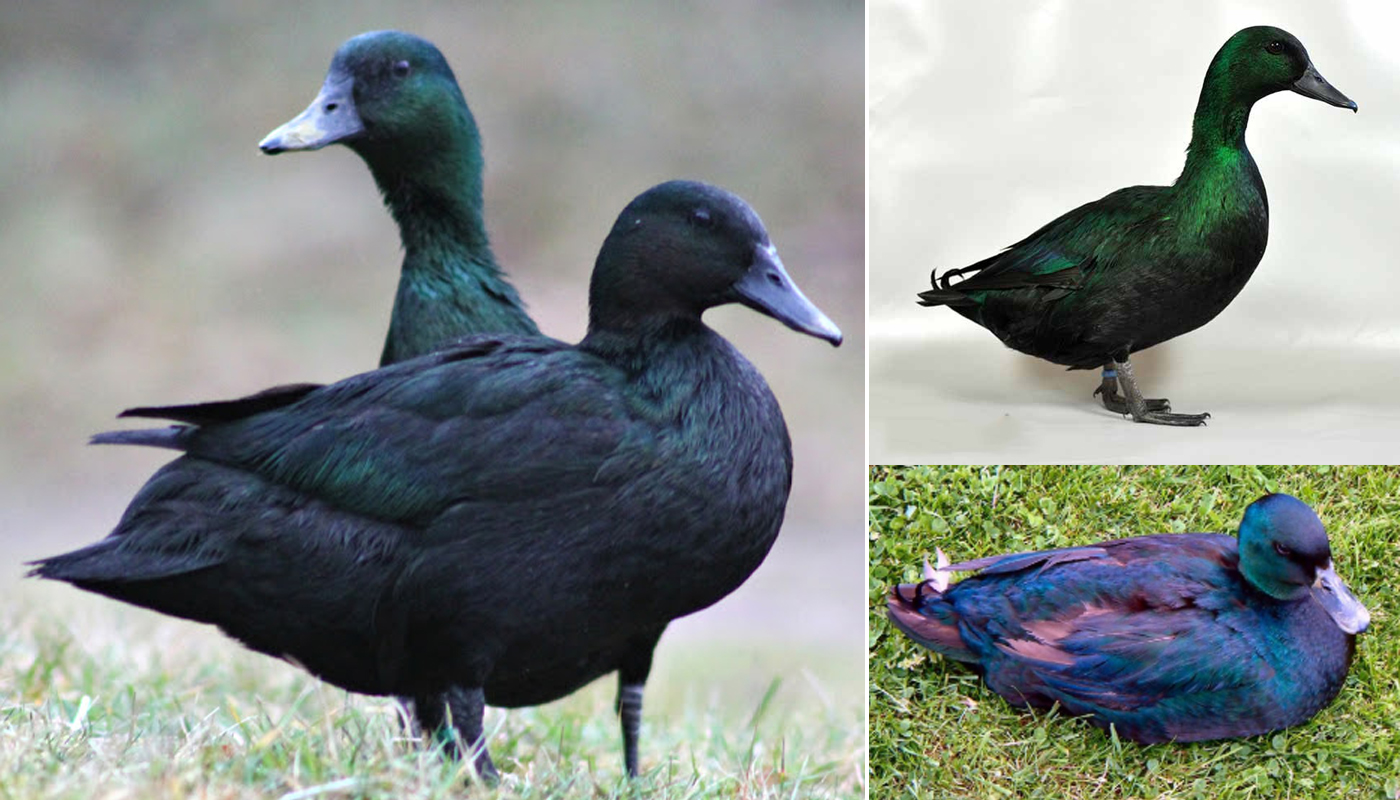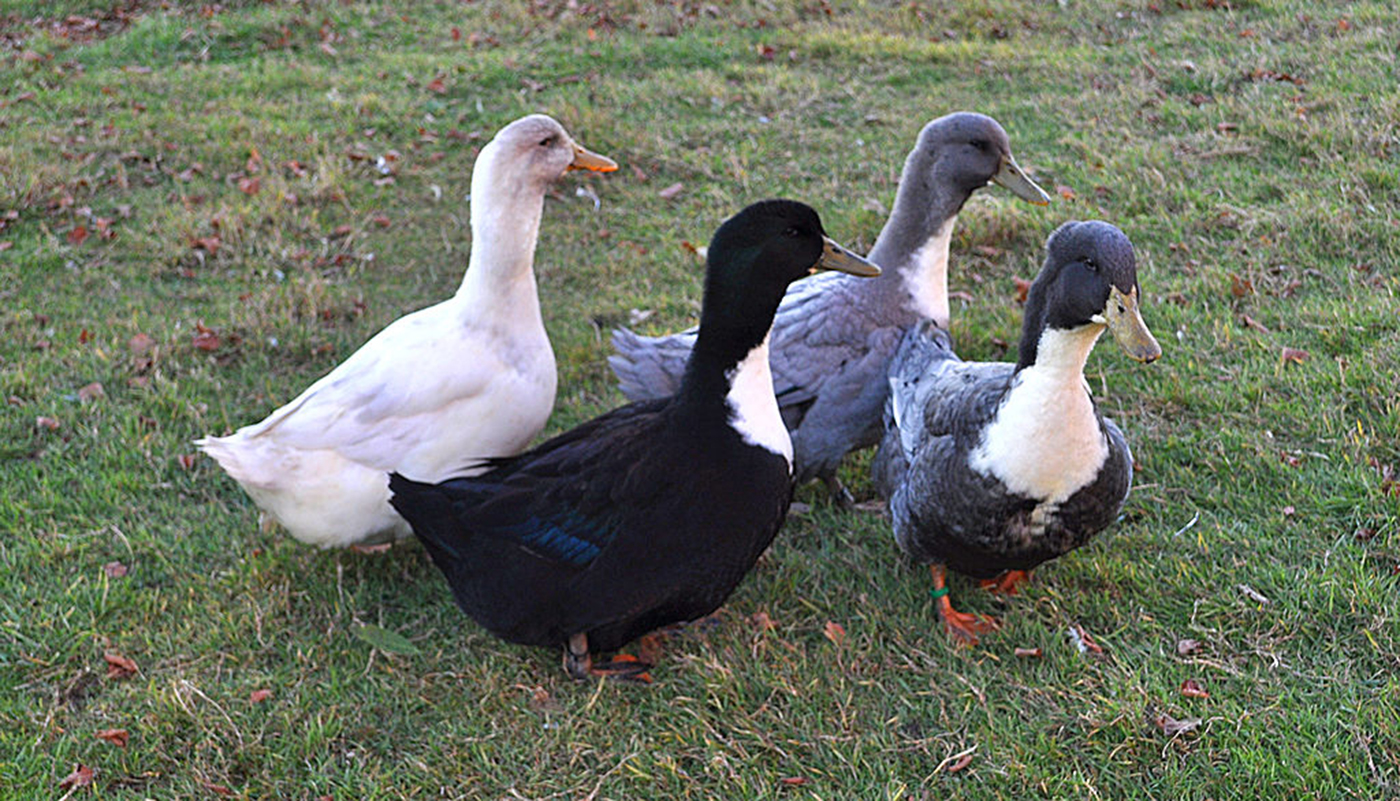
Not only is the Hookbill one of the oldest breeds of ducks in the Netherlands but it is also having a very unique appearance.
The bill of the Hookbill is slightly curved making it a great forager.
It also has quite a unique S-shaped body appearance with its legs placed a further back to balance its long body.
The female has straight tail feathers whilst the male has some cute curly ones.
Historically they were a good dual-purpose utility bird raised for their meat and egg laying ability. Today they are primarily kept as pets, for ornamental or show purposes.
They are, however, really good foragers and a low maintenance breed that are quite excellent as a starter duck for first-time chicken owners.
GENERAL INFORMATION |
|
|---|---|
| Country of Origin: | Netherlands |
| American Poultry Association: | No Recognized by the American Poultry Association |
| Duck Category: | Not Categorized |
| Duck Class: | Not Classified |
| Colors: | Dusky, White-bibbed dusky, White |
| Good starter duck? | Yes |
| You may Also Like: | TOP 10 GOOD STARTER DUCK BREEDS |
| Bantam Variety Available? | No |
| You may Also Like: | 10 BEST BANTAM DUCK BREEDS |
APPEARANCE / IDENTIFICATION
| DUCK BITS | DESCRIPTION | COLOR | |||||||
|---|---|---|---|---|---|---|---|---|---|
| EYES⇒ | Same for M & F | Dark Brown/Blue | |||||||
| BILL⇒ | Same for M & F | Olive Green/Brown White Variety has a yellow bill |
|||||||
| * Black bean tipped | |||||||||
| CRESTED? | No | ||||||||
| LEGS⇒ | Same for M & F Long Legs |
Bright Orange | |||||||
| Wide apart and further back on their S Shaped-body | |||||||||
| FEET⇒ | Same for M & F Medium Sized |
Bright Orange | |||||||
| They have small claws at the end of their webbed toes | |||||||||
| WINGS⇒ | Same for M & F | Depends on the color variety of the duck | |||||||
| White variety has white wings with a cream patch at the end. Dusky varieties have a dusky grey with dark tips |
|||||||||
| FEATHERS⇒ | Same for M & F | Depends on the color variety of the duck | |||||||
| Dusky variety has a dark head and dusky feathers The white variety is pure white White-Bibbed-Dusky is similar to the Dusky variety but has a white bib |
|||||||||
| SKIN COLOR⇒ | Same for M & F | White | |||||||
| AVERAGE WEIGHT⇒ |
|
||||||||
| *Bean: This is also called the nail. It is a small round bump found at the end of the duck’s bill. It is used for defence and to catch insects. It is almost like a fingernail and is damaged can grow back. It can also get overgrown much like fingernails if they do not have something to grind it down on. | |||||||||
| ** Note: This is an average weight for the male duck and not a guaranteed weight | |||||||||
USE/PURPOSE |
||||||||||||||||||||||||||||||||||||
|---|---|---|---|---|---|---|---|---|---|---|---|---|---|---|---|---|---|---|---|---|---|---|---|---|---|---|---|---|---|---|---|---|---|---|---|---|
Females/Hens⇒ |
Eggs, pets and ornamental
|
|||||||||||||||||||||||||||||||||||
Males/Drakes⇒ |
Breed, pet and meat
|
TEMPERAMENT |
|
|---|---|
| “They are docile, active and inquisitive birds” | |
| Good with Kids? | They are okay around supervised kids |
| You may Also Like: | 10 BEST DUCK BREEDS TO KEEP AS FAMILY PET |
| Flyers? | They are excellent flyers that will fly |
| Noisy Birds? | They can be noisy |
| Interact with other ducks? | They will socialize easily |
| Best duck breeds to mix them with: | Any domesticated duck breed . |
| Other animals? | They tend to ignore or avoid other domestic animals |
IDEAL ENVIRONMENT |
|
|---|---|
| “As they were bred to fend for themselves they do like a bit of independence and lots of place to forage” | |
| Ideal Garden Size? | Medium to large |
| Can be Confined? | No |
| Free-Range | Yes |
| Penned Free-Ranging? | Yes |
| Foragers | Yes |
| Endures heat well | Yes |
| Endures cold well | Yes |
| Special Requirements? | No |
| Ideal Duck House: | A well ventilated and insulated secure hutch of adequate size to house all the ducks comfortably |
| Ideal Duck Pond: | Any splash pool or small pond that is not too deep |
| Flock/Paddling Size: | Two or more ducks in the flock |
| You may Also Like: | 22 Best DOMESTIC DUCK BREEDS |
GOOD TO KNOW |
|
|---|---|
| Special Care/Attention Requirements? | They have no special needs |
| Known Predators: | Check with animal control in your area for known predators |
| Conservations Status: | Not Listed For more information on poultry, conservation status, check the American Livestock Conservancy Website |
| Breeders Clubs: | It is best to check with the American Poultry Association for various clubs and or organizations. |
| Where to buy them: | Metzer Farms, Omlet US or check with poultry outlets or farms in your area, the APA or check with the American Livestock Conservancy |
| Other: | If you do not want to risk having your ducks shipped check with your local poultry farms for advice on your nearest supplier. |
HISTORY
The Hookbill is one of the oldest European duck breeds that are still around today. This breed can be traced as far back as the seventeenth century in the Netherlands. The Netherlands is where this breed is thought to have originated from.
The Hookbill was a very popular breed in the Netherlands for laying eggs as it was quite the prolific layer of large duck eggs.
Hookbills were raised along the canals in the Netherlands with the name “Hookbill” referring to its long curved/hooked beak.
The beak of the Hookbill was said to be useful to hunters in distinguishing them from the other wild breeds that would live in close proximity to the domestic ones.
These ducks are great foragers as historically where they were raised in Holland they were not fed like other domestic animals. Instead, they would have to forage for their own food along the canal waterways.
They are still one of the best foragers of the domestic breed and are popular ornaments and exhibition bird in our times.
The Hookbill was first imported to America by Dave Holderread in 2000. Dave Holderread discovered that the breed had three different hookbill types. Some had no curve it was straight, then there was the average curve and those with an extreme curve almost like a Sicle.
He also found that the ducks with the extreme hook curve were not very fertile with a result there are no many with this feature in the USA. They are not listed in the Standard of Perfection by the American Poultry Association.
Health
They are not as susceptible to disease as most other birds and as such have no known health issues
- Ducks need water to ensure they do not get “wet feather” disease. This is where the preening gland dries out. Water also stops them from getting pests such as mites, fleas, ticks, lice, etc.
- Well, fed ducks should hardly have any health issues.
- Any birds kept in a flock need to be dewormed. Although ducks are not as prone as other poultry they should still have a de-worming regime. Speak to a local vet or poultry experts for advice. Our article on Healthy Ducks has some great tips and advice on de-worming ducks.
 Pomeranian Duck Breed – Everything You Need to Know
Pomeranian Duck Breed – Everything You Need to Know East Indie Duck Breed – Everything You Need to Know
East Indie Duck Breed – Everything You Need to Know Swedish Blue Duck Breed – Everything You Need to Know
Swedish Blue Duck Breed – Everything You Need to Know The Best Wild Ducks for Meat Production
The Best Wild Ducks for Meat Production Keeping Backyard Ducks – Pros and Cons
Keeping Backyard Ducks – Pros and Cons Domestic Duck breeds that are or are Fast Becoming Quit Rare
Domestic Duck breeds that are or are Fast Becoming Quit Rare The Best Domestic Duck Breeds for Meat Production
The Best Domestic Duck Breeds for Meat Production Aylesbury Duck Breed – Everything You Need to Know
Aylesbury Duck Breed – Everything You Need to Know Top 10 Domestic Ducks for the Backyard that also Make Good Starter Ducks
Top 10 Domestic Ducks for the Backyard that also Make Good Starter Ducks Orpington Duck Breed – Everything You Need to Know
Orpington Duck Breed – Everything You Need to Know Australian Spotted Duck Breed – Everything You Need to Know
Australian Spotted Duck Breed – Everything You Need to Know The Best Domestic Duck Breeds for Egg Production
The Best Domestic Duck Breeds for Egg Production